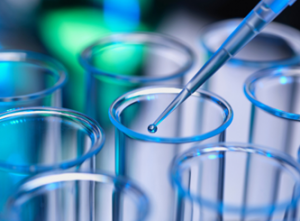Sample Preparation – Choosing a Sample Preparation Technique
Why is sample preparation important?
There are a variety of reasons why we may need to prepare a sample before it can be analyzed, some of the most common reasons are cleaning up the sample, increasing the concentration of the target analyte, switching the sample solvent or matrix and derivatization of the analyte.
Sample preparation methods all aim to improve the detectability and sensitivity of the analyte. Sample clean up can help protect the system and improve column lifetime.
What is the aim of sample preparation?
Sample preparation aims to provide a sample for analysis that is free of any interfaces, not damage the column and/or instrument and a sample that is compatible with the analytical method being used.
The sample solvent should be dissolvable in the HPLC mobile phase or if GC is being used the solvent should not interfere with the column in such a manner that the sample retention and resolution is affected.
What are the approaches to sample preparation?
Most commonly, the sample preparation technique that is chosen depends upon the analyte, the sample matrix or the instrument that is being used.
It is important to choose the least complicated technique possible as any sample preparation technique increases the potential for error. A technique with less steps reduces the potential for inherent error.
Understanding your target analyte is vital to be able to choose the correct sample preparation technique. In order to obtain the greatest possible specificity the physicochemical properties of the analyte and sample matrix must be exploited.
Exploiting these properties may include altering the pH of the sample ensuring that ionizable compounds are ion-supressed which means that they will partition with greater efficiency into the organic phase for liquid-liquid extraction (LLE). Optimization of salt concentration as well as sorbent type is essential to maximise analyte recovery in solid phase extraction (SPE).
For liquid chromatography (LC) applications often the sample matrix will need to be altered to make the sample more amenable to analysis. This can include concentrating a sample under inert gas and then reconstituting in a solvent which is suitable for the mobile phase being used.
If an analyte is not amenable to analysis by LC or gas chromatography (GC) it may need to be derivatized to increase its specificity and sensitivity, this is often the case with amino acid analysis. For more in depth discussions on LLE, SPE and derivatization extraction methods see the technical notes in the knowledge centre on our website.
Some of the most important things we can consider when choosing a sample preparation technique are the analytical instrument, level of recovery required, use of internal standards, required accuracy and precision, sample matrix, sample volume and functional groups.
Considering the interferences that are endogenous to the sample is also important, a good sample preparation technique will clean up interferences that are similar to the analyte – this may require numerous steps.
Whether the sample is a solid or liquid will also affect the choice of sample preparation technique, the preparation of solid samples is often more complex than liquid samples. The solid sample must be put into liquid form before it can be analyzed. This is relatively easy if the sample is dissolvable however if it is not the sample will require extracting which adds complexity
If you enjoyed this article, you might want to take a look at these other interesting reads:
https://scioninstruments.com/blog/sample-preparation-derivatization-extraction/
https://scioninstruments.com/blog/sample-preparation-liquid-liquid-extraction/
https://scioninstruments.com/blog/sample-preparation-manual-solid-phase-extraction/
Download Choosing a Sample Preparation Technique – Choosing a Sample Preparation technique

